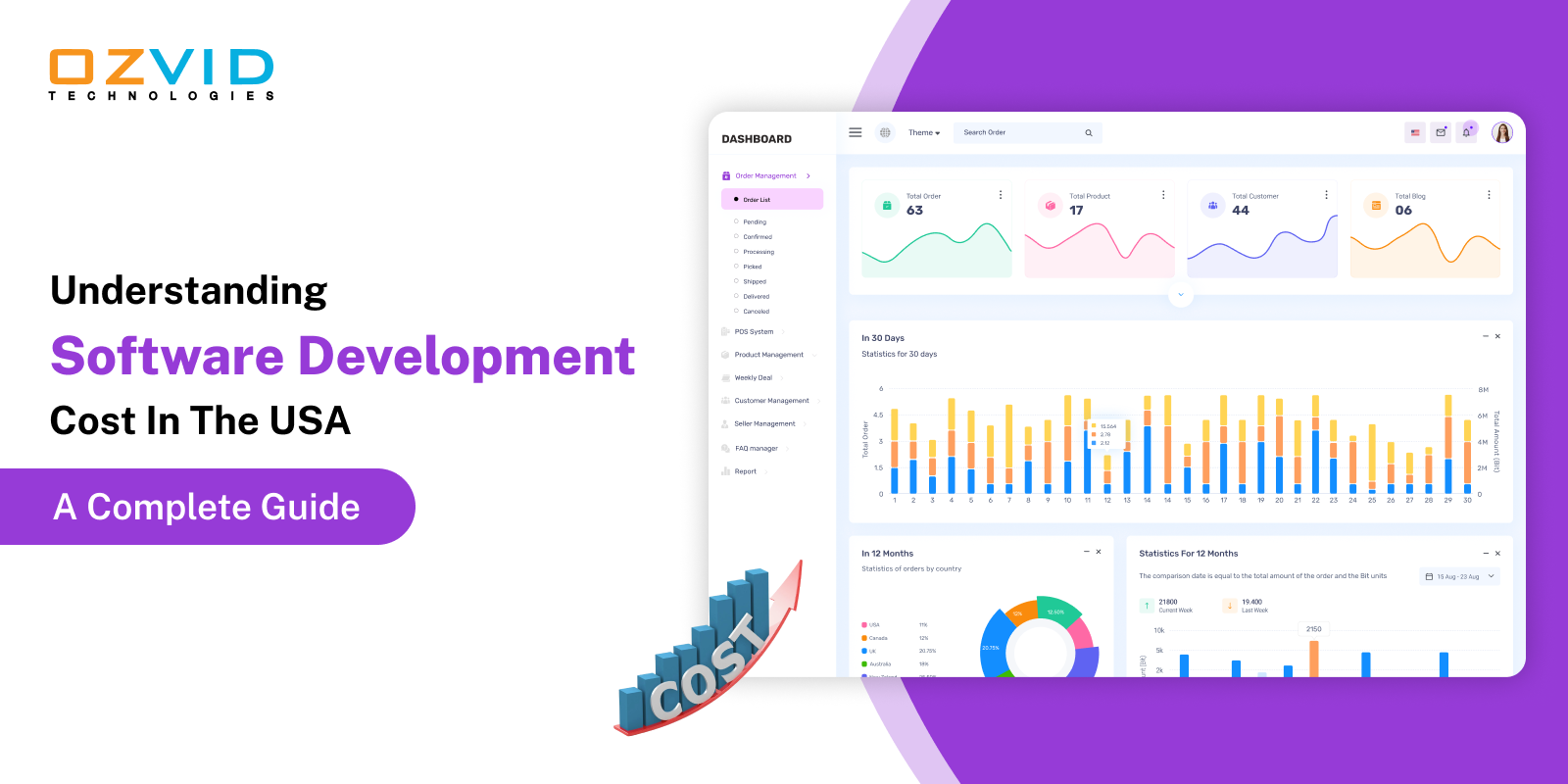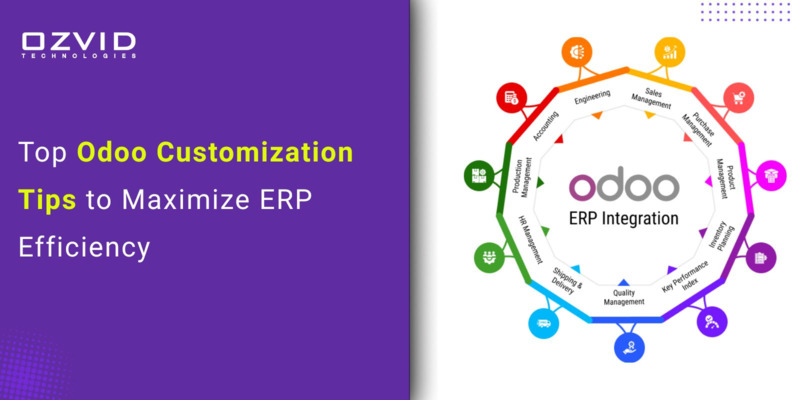- Jan 21, 2025
Share this post on:

The landscape of software development costs in the USA is intricate and influenced by numerous factors. As businesses increasingly rely on technology to streamline operations, enhance customer experiences, and drive innovation, understanding the financial implications of software development becomes crucial. This comprehensive guide delves into the various elements that contribute to software development costs, helping stakeholders make informed decisions.
Key Takeaways
Cost Range: Software development can cost anywhere from $30,000 to $300,000, with complex solutions reaching $1 million or more.
Factors Influencing Cost: Project scope, team composition, technology stack, and geographical location all play a significant role in pricing.
Common Pricing Models: Fixed price, time-and-materials, and dedicated team models offer flexibility depending on the project’s nature.
Cost-Saving Strategies: Develop an MVP, use offshore resources, balance team expertise, and leverage open-source tools to reduce costs.
Overview of Software Development Costs
The cost of developing software can vary significantly based on several factors, including project complexity, team composition, technology stack, and geographical location. On average, the cost to develop a software application can range from $30,000 to over $300,000. For more complex solutions, such as enterprise-level applications or SaaS products, costs can escalate to $1 million or more.
Average Cost Breakdown
A typical breakdown of software development costs is as follows:
These figures provide a general idea but can fluctuate based on specific project requirements and market conditions.
Factors Influencing Software Development Costs
Understanding the various factors that influence software development costs is essential for accurate budgeting and planning.
1. Project Scope and Complexity
The scope of a project directly correlates with its cost. Projects can range from simple applications with basic functionalities to complex systems that require extensive features and integrations. The complexity level can be categorized as follows:
• Basic Complexity: Simple applications with limited features (Cost: $10,000 - $40,000).
• Average Complexity: Applications with moderate features and functionalities (Cost: $45,000 - $60,000).
• Advanced Complexity: Sophisticated applications with advanced functionalities (Cost: $75,000 - $180,000).
2. Team Composition
The composition of the development team plays a significant role in determining costs. Teams can vary from in-house developers to freelance professionals or offshore agencies. The cost associated with different team types is illustrated below:
Team Type Estimated Cost
Local Development Company (USA) $200,000
In-house Developers (USA) $220,000
Offshore Development Agency (India) $100,000
Choosing the right team type can lead to significant cost savings without compromising quality.
3. Technology Stack
The choice of technology stack also impacts the overall cost. Different technologies come with varying licensing fees and development times. For instance:
• Web applications may utilize frameworks like React or Angular.
• Mobile applications could be developed using Swift for iOS or Kotlin for Android.
• Complex systems might require robust back-end solutions like Node.js or .NET.
Each technology choice has its own cost implications related to developer expertise and project requirements.
4. Geographical Location
Geographical location influences labor costs significantly. In the USA, hourly rates for software developers typically range from $70 to over $150, depending on experience and expertise. Conversely, outsourcing to countries like India or Eastern Europe can reduce costs dramatically—often by as much as 50%—while still maintaining quality.
Common Pricing Models in Software Development
Selecting an appropriate pricing model is crucial for aligning project goals with budgetary constraints. The most common pricing models include:
• Fixed Price Model: Suitable for projects with well-defined scopes. This model provides predictability in terms of cost and timeline.
• Time-and-Materials Model: Offers flexibility for projects where scope may change over time. Costs are based on actual hours worked and materials used.
• Dedicated Team Model: Involves hiring a dedicated team that works exclusively on a project. This model is effective for long-term projects requiring continuous development efforts.
Hidden Costs in Software Development
While planning for software development expenses, it’s essential to consider hidden costs that may arise throughout the project lifecycle:
• Maintenance and Support: Post-launch support is crucial for ensuring the software remains functional and relevant.
• Training Costs: Training staff to use new software can incur additional expenses.
• Integration Costs: Integrating new software with existing systems often requires additional resources.
Ignoring these hidden costs can lead to budget overruns and project delays.
Strategies to Reduce Software Development Costs
To manage expenses effectively without sacrificing quality, businesses can adopt several strategies:
1. Develop a Minimum Viable Product (MVP): Creating an MVP allows businesses to test core functionalities before full-scale development.
2. Optimize Team Composition: Balancing senior and junior developers can reduce costs while maintaining quality.
3. Leverage Offshore Resources: Utilizing offshore teams can significantly cut labor costs while accessing a broader talent pool.
4. Utilize Open Source Technologies: Open-source tools can reduce licensing fees associated with proprietary software.
Conclusion
Understanding the intricacies of software development costs in the USA is vital for businesses looking to invest in technology solutions. By considering factors such as project scope, team composition, technology stack choices, geographical location, pricing models, and hidden costs, stakeholders can make informed decisions that align with their budgetary constraints.
As companies navigate this complex landscape, partnering with OZVID Technologies can provide valuable insights and support throughout the process. We specializes in delivering high-quality software solutions tailored to meet diverse business needs while optimizing costs effectively. Our experts ensure that clients receive not only a product that meets their requirements but also a strategic approach to managing development expenses efficiently.
FAQ's
What factors affect software development costs in the USA?
Software development costs in the USA are influenced by factors such as project complexity, the technology stack used, development team experience, and the location of the development company. Additional factors include the scope of the project, required integrations, design requirements, and post-launch support. Custom features, security needs, and testing requirements also impact the overall cost.
How much does software development cost in the USA?
The cost of software development in the USA varies widely depending on the project's complexity. On average, small-scale projects might cost between $20,000 and $50,000, while more complex solutions could range from $100,000 to over $500,000. Costs also depend on the hourly rates of development teams, which can range from $100 to $250 per hour depending on location and expertise.
Is it more expensive to hire a software development agency in the USA compared to freelancers?
Yes, hiring a software development agency in the USA is generally more expensive than hiring freelancers. Agencies typically offer a full range of services including project management, testing, and support, which justifies the higher cost. Freelancers, while more affordable, might require more oversight and coordination, and may lack the same level of resources as agencies.
How can I reduce software development costs in the USA?
To reduce software development costs, you can consider several strategies such as simplifying the project’s features, using open-source technologies, or choosing offshore or nearshore development teams with lower hourly rates. It's also beneficial to clearly define your project scope upfront to avoid unnecessary revisions and ensure that the development process is efficient.












